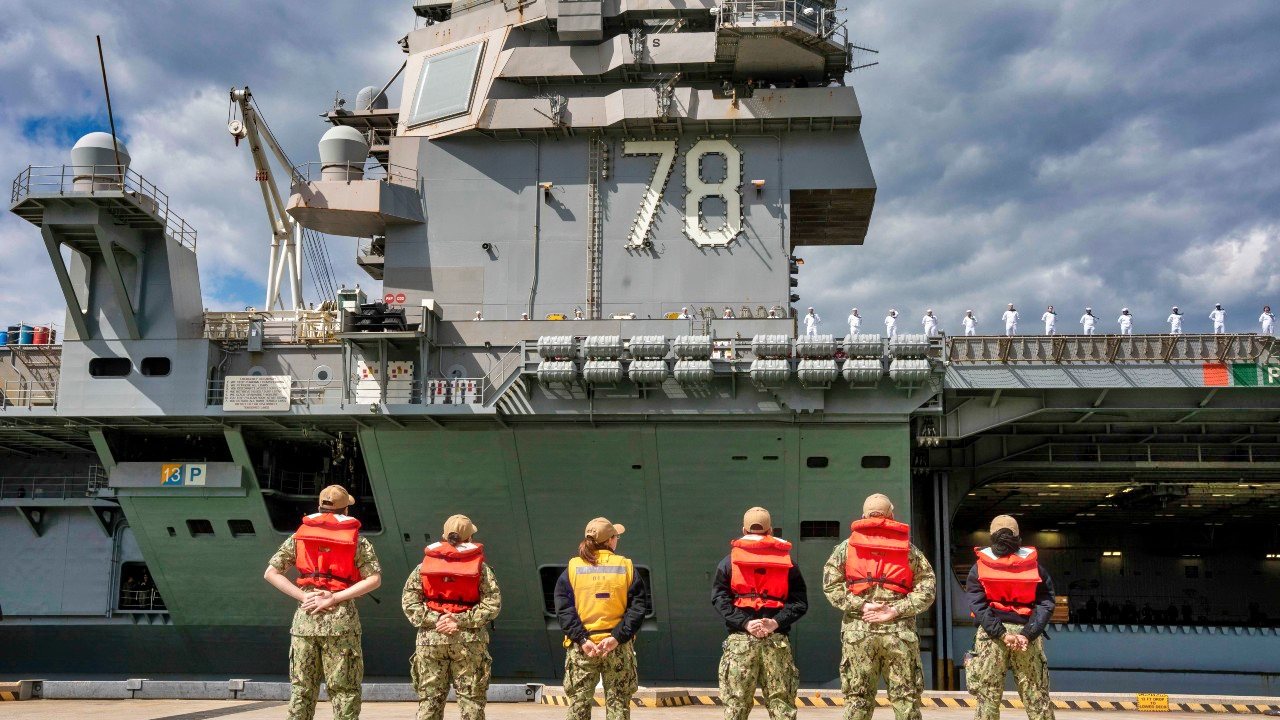5 Reasons the Ford-Class Aircraft Carrier Is Truly Unstoppable
The Ford-class aircraft carriers, including the USS Gerald R. Ford (CVN-78), are the most advanced in service today, thanks to several standout features.
Summary and 4 Key Points You Need to Know: The Ford-class aircraft carriers, including the USS Gerald R. Ford (CVN-78), are the most advanced in service today, thanks to several standout features.

-These include the Electromagnetic Aircraft Launch System (EMALS) for smoother, more accurate launches; upgraded A1B nuclear reactors that provide additional power for future systems; Advanced Arresting Gear (AAG) for safer aircraft recovery; Advanced Weapons Elevators (AWE) for faster munitions transport; and enhanced crew living conditions.
-These innovations reduce manpower needs, improve operational efficiency, and increase combat readiness, making the Ford-class carriers the pinnacle of modern naval aviation technology.
Ford-Class Carriers: The Most Advanced Warships on the Seas Today
The Ford-class is larger and offers several features that truly make it the best aircraft carrier in service anywhere today. Here are five of the stand-out features of the Ford-class aircraft carriers:
EMALS
CVN-78 was the first aircraft carrier in the world to be equipped with an electromagnetic-powered aircraft launch system (EMALS). It offers numerous advantages over the traditional steam-powered catapults of the Nimitz-class carriers, including more accurate end-speed control, with a smoother acceleration at both high and low speeds.
The system also possesses the necessary energy capacity to support an increased launch envelope and a capability of launching both current and future carrier air wing platforms – from the lightest unmanned aerial vehicles to heavy strike fighters.
Improved Nuclear Reactors
The EMALS wouldn't be possible without the carriers' two upgraded A1B nuclear reactors. In addition to powering systems like the electromagnetic catapult and multifunction radar, the increased generating capacity could be employed in the future to support new ship defenses utilizing directed-energy weapons (DEWs) and other systems.
Though the actual performance is classified, it is estimated that the thermal power output of each A1B will be around 700 MWth, some 25% more than provided by the A4W on the Nimitz-class supercarriers.

Advanced Arresting Gear
EMALS can help get the aircraft in the sky faster, while the Advanced Arresting Gear (AAG) system provides Ford-class ships with the ability to recover both current and projected carrier-based, tailhook-equipped aircraft. As a follow-on system to the Mark-7 system of the Nimitz-class, AAG can also allow for the recovery of a broader range of aircraft and, through its greater control, reduces the fatigue-impact load on the recovered platforms. The AAG architecture also includes built-in test and diagnostic technologies.
The AAG further requires less maintenance and manpower to operate than the legacy arresting system, while it can help increase the sortie rates. It also offers lower energy consumption and a decreased gross ship weight.
Advanced Weapons Elevators
The Ford-class features new pathways that were designed to facilitate the movement of modern munitions. The Advanced Weapons Elevators (AWE) employs several advanced technologies, including electromagnetic motors and hydraulic systems, which enables fewer sailors to safely move ordnance from weapons magazines to the flight deck with unparalleled speed and agility.
Quality of Life Enhancements
The Ford-class carriers were designed to substitute technology for manpower in many activities, thereby reducing the crew size by as much as 20%. As a result of being less manpower-intensive, the carrier will have extra space for a number of quality of life enhancements that include improved berthing compartments, better gyms, and more ergonomic work spaces.

Author Experience and Expertise: Peter Suciu
Peter Suciu is a Michigan-based writer. He has contributed to more than four dozen magazines, newspapers, and websites with over 3,200 published pieces over a twenty-year career in journalism. He regularly writes about military hardware, firearms history, cybersecurity, politics, and international affairs. Peter is also a Contributing Writer for Forbes and Clearance Jobs. You can follow him on Twitter: @PeterSuciu. You can email the author: [email protected].
All images are from either Creative Commons or Shutterstock.


